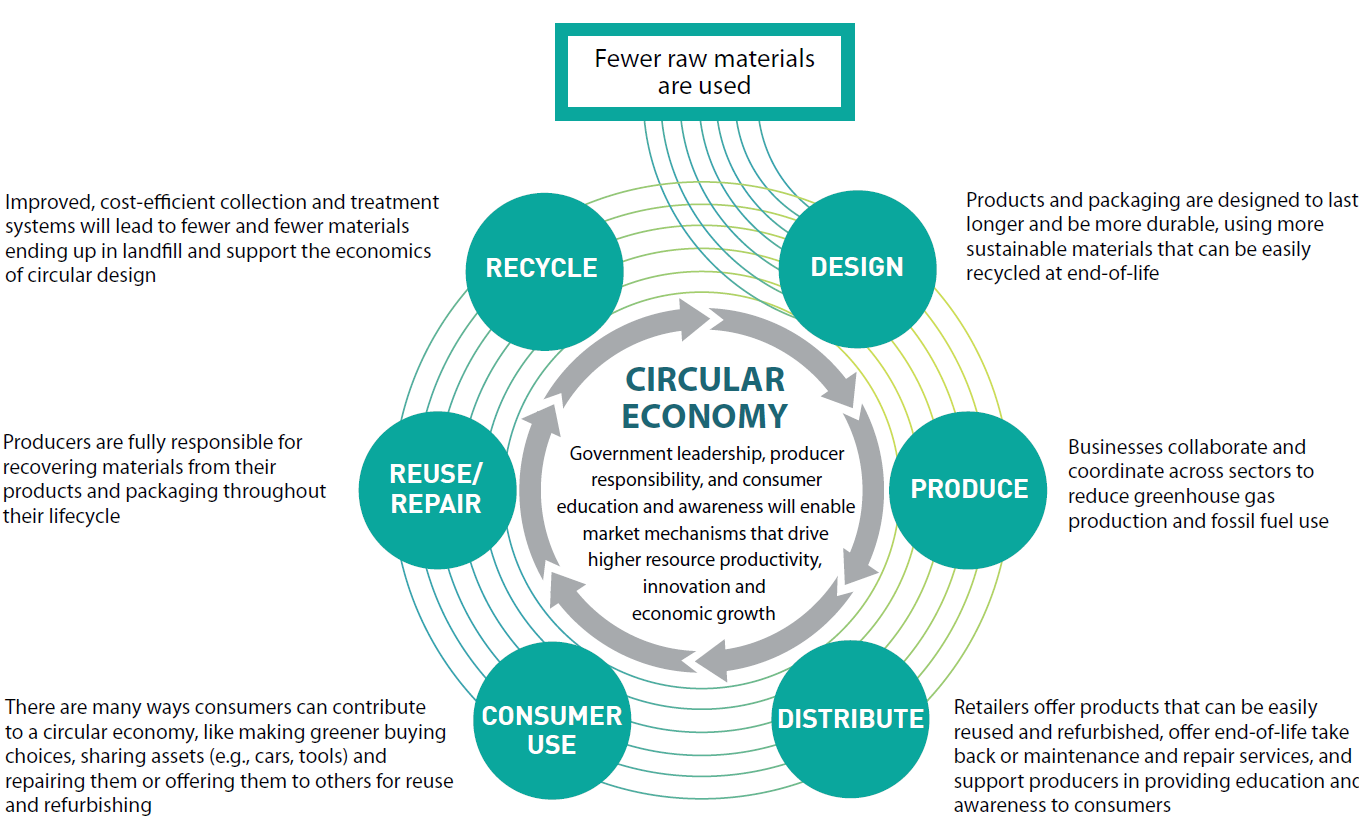The Fight Against Climate Change in Ontario: Building The Circular Economy
Ontario aiming to keep organic waste away from landfills
Around the world, landfills are getting increasingly saturated. Yet much of the residual waste ending up there can be recycled and processed, through composting or biomethanisation. Like many provinces committed to reducing GHG emissions, Ontario aims to considerably reduce the quantity of waste by banning on organic waste from landfills over the next few years.
In Ontario, the waste sector is responsible for approximately 6% of the greenhouse gas emissions produced. About 12 million tonnes is generated in the province every year– that’s nearly a tonne of waste per person every year. In the last ten years, Ontario’s overall diversion rate has stalled at 25%.

According to the Ontario government, if improvements aren’t made, the province’s landfills could run out of capacity within the next 20 years.
In 2004, the Liberal government promised to boost the rate of waste diversion to 60% by 2008 – through recycling and composting programs, for example. But the situation hasn’t changed over a decade. Considering these data, the ban on sending organic waste to landfills is an ambitious target for the province.
“Fundamental changes are required in how people think of and treat organic waste,” said Environment Minister Chris Ballard.
Waste-free Ontario Act
In late 2016, Ontario proclaimed the Waste-Free Ontario Act, comprising the Resource Recovery and Circular Economy Act and the Waste Diversion Transition Act. The Act, adopted in June 2016, will tackle the problem of waste generation by increasing resource recovery and moving towards a circular economy, “a system in which products are never discarded, but reused, recycled and reintroduced into new products.”
“At the heart of the legislation is the idea that producers should be responsible for the end-of-life management of their products and packaging,” stated Ministry of the Environment and Climate Change Glen Murray.
Ontario is looking to the examples of Metro Vancouver and Nova Scotia, where compostable waste is banned from disposal sites for over 20 years.
Programs must be established to encourage Ontarians to make better use of their resources and change their habits like throwing away after a single use.
The IC&I (industrial, commercial and institutional) sectors must also participate so Ontario can make significant progress towards its diversion objectives.
Strategy for a waste-free Ontario
The legislation is accompanied by a strategy, which lays out Ontario’s vision for a circular economy and goals of a zero-waste Ontario with zero greenhouse gas emissions from the waste sector.
Here is the strategy that outlines the actions Ontario will take in the coming years that will help achieve goals.
According to Chris Ballard, improvements to existing programs are needed to reduce the amount of waste that goes the way of landfills.
“Looking at banning organic waste in landfills is one option that we’re looking at. By transitioning to a low-carbon circular economy, Ontario has the opportunity to lead a global movement toward a more sustainable model with significant economic, social and environmental benefits,” Ballard told reporters.

Ontario’s climate change action plan
In June 2016, Ontario released its Climate Change Action Plan. The plan describes the measures that will be taken in the next few years to fight climate change, reduce greenhouse gas pollution and help move us to a prosperous low-carbon economy.
Through the plan, Ontario will reduce emissions coming from waste, decrease our reliance on virgin materials, foster new economic growth, new employment opportunities and savings to consumers and taxpayers.
Ontario will work on collaboration on this plan with businesses, industries, municipalities, environmental organizations and other partners to build a greener future.
Ontario signs formal agreement to join Quebec-California carbon market in 2018
Ontario signs formal agreement to join québec-california carbon market in 2018
The carbon market is an important part of Ontario’s action plan to combat climate change.
From January 1, 2018, Ontario will formally enter the Québec-California carbon market in order to fight more effectively against climate changes and reduce air pollution from GHG emissions.
By joining their forces, all three governments will harmonize regulations and reports regarding the cap-and-trade system for greenhouse gas emission credits.
Their cap and trade system aims to effectively reduce greenhouse gas emissions in our atmosphere by rewarding innovative companies that set a limit on GHG emissions 12and creating more opportunities for investment in Ontario.
“Climate change is a global problem that requires global solutions. Now more than ever, we need to work together with our partners at home and around the world to show how our collaboration can lead to results in this international fight,” said Premier of Ontario, Kathleen Wynne.
Québec, Ontario and California kept up the efforts to advocate for the adoption of carbon markets worldwide, including through various international partnerships.
“We are now standing here having agreed on creating the largest carbon market in North America. It is an extremely important step. The two largest provinces, the biggest state, working together.” “I think we cannot really overstate how important it is that we as these large jurisdictions … play a leadership role and that as we move forward we work to bring other jurisdictions with us”, said Ms. Wynne.
____________________________

